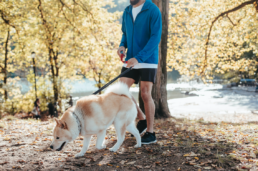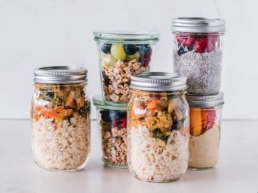By Juliana Ronn, First Mile Care, Director of Operations
If you’re following the First Mile Care Diabetes Prevention Program (DPP), you already know that a core principle for reducing your risk of developing type 2 diabetes is to perform 150 minutes of exercise per week. Yet it’s been a challenge for many people to do so during the COVID-19 shutdown of gyms, yoga and dance studios, community centers, and other shared exercise environments.
First Mile Care DPP Coach Lizzie Nichols provided useful advice for staying active while sheltering in place in an earlier article. As we slowly emerge from isolation into the “new normal,” some folks are understandably reluctant to jump back into group exercise environments, especially if they’re at high risk from the coronavirus due to age or chronic conditions. While walking and running remain great activities, they don’t replace weight-lifting and other resistance training, and not all of us have the money or space to have gym-level equipment at home.
Our First Mile Care DPP Coach Sandra Huskey recently made “at-home resistance training” a topic in our ongoing series of “Diabetes Prevention in Action” webinars. As Sandra notes, whether or not there’s a gym in your future, it’s easy to do resistance and balance training at home. Sandra is a certified group fitness instructor, so read on for her expert advice!
Your home is your gym
Resistance training is anything that uses force or resistance against your movement. At home, you can do this by using your own body weight or by using free weights like dumbbells. You can increase your resistance as you become stronger and more flexible.
But what if you don’t have dumbbells, and can’t buy any now while many stores are shut or have items on backorder? Just “MacGyver it” with your own furniture and pantry items!
-
Makeshift weights. Go into your kitchen cupboards. Soup cans and water bottles each weigh a little over a pound apiece, so with one in each hand, voilà, you have a set of weights! Soup cans tend to be a little thick to grasp, and water bottles, while slimmer, can be a little bendy. If your hands are big enough and strong enough, hold two water bottles in each hand for two pounds on each side. As you get stronger, you could work up to using a gallon jug of water or milk, which equals about eight and a half pounds.
-
Bicep curls and arm raises. Sit in a firm kitchen chair to do bicep curls and arm raises while holding your makeshift dumbbells. Do about five to ten repetitions, if possible, and then take a 30-second break. That’s called a set. Ideally, you do two to three sets of five to ten repetitions. (That advice applies to all the following exercises.)
-
Modified wall pushups. Pushups work out your chest, back, and core, so are a great all-around exercise. You probably think you can’t do a pushup — but have you tried a modified pushup? Use a flat wall, door, countertop, or another solid surface in your home to push against. Be careful to avoid any furniture item or surface that can move, such as a chair, coffee table, or ottoman, as they’re not stable.
-
Steps pushups. If you’re in a single-level home, you probably won’t have a staircase but you may have a front porch with steps. It’s pretty easy to find stairs somewhere while you’re out on a walk. You can do pushups and dips on steps to work out your shoulders, biceps, and triceps. Start on the fourth or fifth step and push against each step as you move down.
-
Stork and ballerina balancing. As you get older, it’s normal that your balance and flexibility start to waver and you may occasionally feel a little unsteady when out for a walk. With one hand on a firm kitchen chair for safety, do your best stork pose and practice lifting one leg and balancing on it. The key is to be able to take your hands away from the chair and hold your balance on one leg, starting at a few seconds and building up to a full minute. You can also use the chair for support when doing toe raises, where you lift yourself up onto your toes and try channeling your inner ballerina.
-
Hall tightrope. Another great balancing exercise is to walk down your hall or living room in a straight line as if you were on a circus tightrope or Olympics balancing beam. Start with your heels and roll onto your toes, high-stepping one foot in front of the other.
Mix it up
When you do weight training, you want to give your muscles time to rest. If you do full-body resistance training one day, try a different form of exercise the next day, like walking. Or you can alternate upper- and lower-body training on successive days.
These are all simple resistance exercises that you can do in the comfort of your own home, with tools and equipment already available to you. Balancing exercises are especially easy to practice while you’re multitasking at home, such as cooking in your kitchen. As you gain strength, continue to escalate the weight, force, and resistance you use and you’ll see progress in your strength, balance, and flexibility.
Watch First Mile Care DPP coach Sandra Huskey demonstrate these simple at-home resistance training techniques in our recent webinar.
To learn more about how you can benefit from the First Mile Care Diabetes Prevention Program, take our prediabetes risk test and get started today!



